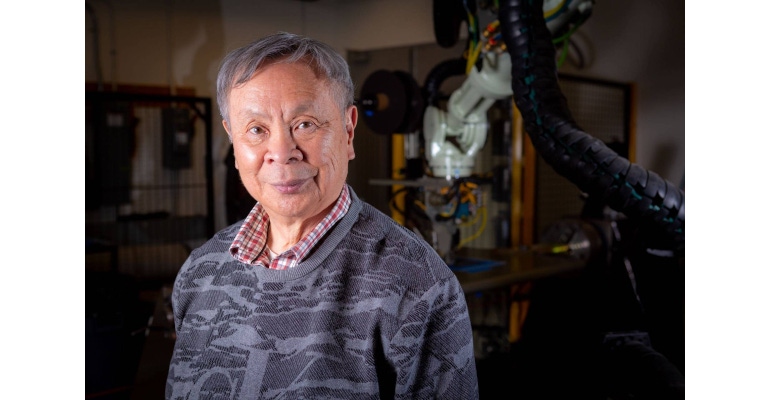4D Composite Printing Creates Shape-Shifting Drone Wing
Novel process allows for the design of experimental technology to replace the parts commonly used in small-to-medium-sized UAVs.
June 15, 2022

Researchers have developed a way to fabricate a new type of wing that can change its shape in flight for unmanned aerial vehicles (UAVs) cheaply and efficiently using a novel 4D-printing process, they said.
Researchers from Concordia University in Montreal, Canada, have developed a new way to fabricate what are called “compliant trailing edge (ACTE)” morphing wings for drones. They are eyeing the experimental technology to replace the commonly used hinged wing flap with an ACTE wing, which is attached to the main wing body of the UAV but can bend up to 20 degrees, researchers said.
Like most industries, aviation is looking to cut costs due to rises in fuel prices, but also maintain quality aircraft and business efficiency amid environmental and other concerns. UAVs—perhaps best known for their uses in the military and to provide video for social media, entertainment, and sports—are a growing sector of this industry and have the same concerns as those building larger aircraft.
Specifically, the study—led by Concordia Professor of Mechanical, Industrial and Aerospace Engineering Suong Hoa—used 4D printing with composite materials to develop the new wing, which could be applicable in certain types of UAVs and provide an improved wing design cost-effectively, he said.
“Our paper shows that a UAV using this kind of wing can support a good amount of load for small- or medium-sized vehicles,” Hoa, who also is director for the Concordia Center for Composites, said in a press statement.
4D Composite Printing Goes Beyond 3D Printing
4D printing is an evolution of printing in which materials not only are used to print an object in 3D, but some of the materials can change shape or move in reaction to certain stimuli.
In this type of printing, the initial printing is done on a flat surface that is then exposed to the stimulus, which causes a reaction and changes the shape of the surface of the printed object. The “4D,” in this case, refers to the altered configuration of the once-flat material.
However, 4D printing with composites takes on a new complexity, researchers said. Instead of using the soft substance typically used in 3D and 4D printers, composite 4D printing relies on a combination of long, fine filaments that are held in place by a resin, researchers said.
Further, each filament is tiny—only 10 microns thick, or about 1/10th the diameter of a human hair—adding to the complexity, they said.
To print an object in the process developed by Hoa and his team, a 4D composite printer first unrolls the filament-resin mixture in ultra-thin layers at 90-degree angles from each other. The layers are then compacted together and cured in an oven at 180 degrees Celsius, after which they are cooled down to 0 degrees Celsius to create an object that is stiff but not brittle.
Experimental Design
This process allowed researchers to fabricate a section of material with a uniform curvature that they could fit in between the upper and lower surfaces of the wing flap that they fabricated. This part is flexible and strong enough to support the 20-degree deformation that a UAV wing requires to maneuver deftly in flight, they said.
“The idea is to have a wing that can change its shape easily during flight, which would be a great benefit as compared to fixed-wing aircraft,” Hoa explained in a press statement.
Researchers published a paper on their work in the journal Composite Structures.
The 4D composite printing process developed by his team can be applied beyond the fabrication of new drone wings, Hoa said. Moreover, the transportability of the finished product—which is flat and easy to package—allows it to be sent even to remote areas, extending its scope, he said.
About the Author(s)
You May Also Like



